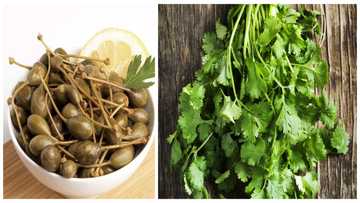30 ancient Egyptian symbols with their meanings
The early Egyptians have for a very long time fascinated people from other societies. This is because of their innovations, religious beliefs, cultural practices, and general lifestyle. Symbols of Egypt are some of the most interesting signs created by humans. There were many pharaonic symbols in the life of ancient Egyptians. The symbols varied depending on the events, royalty, and rituals.

Source: Instagram
Learning about Egyptians signs and ancient Kemetic symbols is one of the most interesting things you can do. You will learn a ton about ancient society and how human beings, despite evolving, still stick to some practices.
Egyptian symbols with their meanings
Ancient Egyptians respected royalty. That is why, even today, you will find that modern Egyptians treat their leaders with respect and honor. The following are Egyptian symbols and meanings.
1. Ankh

Source: Instagram
The Ankh is one of the most renowned ancient Egypt symbols. It is also known as Nile's Key as it epitomizes the union between Osiris and Isis. The symbol represents the concept of eternal life.
2. The djed

Source: Instagram
The djed is also known as the backbone of Osiris. It is one of the Ancient Egypt religious symbols that are treated as sacred. This symbol was Osirian in nature and was primarily associated with themes of rebirth and regeneration.
3. Wadjet eye (eye of Horus)

Source: Instagram
This is another ancient Egypt religious symbol that is widely known today. It represents sacrificial and curative qualities. Wadjet eye protects against envy, disease, harmful animals, and evil spirits.
4. Eye of Ra

Source: Instagram
Experts and historians have been debating for centuries about the origin of the Eye of Ra symbol. However, many believe that it was essentially the right eye of Horus and became known as the Eye of Ra in ancient times. The eye of Ra symbolizes the sun and is also identified as the personification of goddesses like Wadjet, Hathor, Mut, Sekhmet, and Bastet.
5. Was scepter

Source: Instagram
The was scepter is one of the most crucial symbols of ancient Egypt. It was seen as a symbol of power and represented the dominion of the gods. It safeguarded the prolongation of a king’s opulence and success.
6. Scarab beetle

Source: Instagram
The living and the dead wore the scarab beetle. This ancient Egypt symbol represented death, rebirth, great power, guide, and protection in the afterlife. It was so popular that societies outside of ancient Egypt recognized it.
7. Cartouche

Source: Instagram
The ancient Egyptian hieroglyphic nameplate is one of the most distinct symbols. It symbolizes protection against evil spirits both in this life and the afterlife. The cartouche was originally shaped like a circle before being changed to an oval with a horizontal bar. This nameplate also represented divine intervention.
8. The lotus

Source: Instagram
There were two main types of lotus, white and blue. It represents the rebirth and unification of the two Egyptian kingdoms. Lotus had other uses like the manufacture of perfumes during ancient times.
9. Uraeus

Source: Instagram
Uraeus is one of the most honored symbols associated with the gods, goddesses, and Pharaohs of ancient Egypt. It represents Wadjet, an ancient goddess who is associated with royalty. The cobra was also a fetish and believed to have magical powers and divine protection.
10. Ka

Source: Instagram
Ka represents the reception of life and spiritual power that lived within a person’s body and survived death. The symbol was connected with the place where the body was placed in the burial chamber in a cemetery.
11. Ba

Source: Instagram
Ba is the heavenly spirit and human personality in the spirit world. This Egyptian sign is in the form of a bird with a human head carrying the deceased person’s features.
12. The winged sun

Source: Instagram
The winged sun was a symbol recognized not just in ancient Egypt, but also far beyond. It represents the god of the midday sun. This symbol was used in temples and as an amulet to protect the Egyptians who wore it. I was also worn to pay homage to other Egyptian gods.
13. Ouroboros

Source: Instagram
It represented the journey of Aten, the solar disk in Egyptian mythology. It also symbolizes rebirth, the recreation of life, perpetuity, and infinity. Like a dozen other Egyptian symbols, Ourorobos was also used in other societies in the ancient world. It is known as Jörmungandr in Nordic mythology.
14. Amenta

Source: Instagram
The Amenta represents the earthly world or the land of the dead. It was originally used as the symbol of the horizon during the sunset. It was later meant to represent the western bank of the Nile. The ancient Egyptians buried their dead at the Nile.
15. Knot of Isis

Source: Instagram
This Egyptian symbol represents life. It takes a shape that is almost similar to the ankh symbol. The shape is not the only thing that makes it similar to the ankh as its meaning was also construed to be similar to the ankh.
16. Feather of Ma'at

Source: Instagram
The feather of Maat represented justice in ancient Egypt. This came to be as ancient Egyptians believed that one’s heart would be weighed against the maat feather in the hall of two truths when one’s soul entered duat.
17. Crook and flail

Source: Instagram
The crook and flail symbolize the authority of the pharaohs. The two symbols were originally emblems of the god Osiris before being changed to recognize the kings. The staff symbolized Pharaoh as the shepherd of his people. The flail represented the role of the provider of food to those he ruled.
18. Deshret

Source: Instagram
Deshret is one of the Egyptian goddess symbols that represent lower Egypt, the lands of the goddess Wadjet. The deshret was also connected with the symbol of Kemet, the fertile lands within Seth's territory.
19. Hedjet

Source: Instagram
Hedjet was also known as the white crown. It is one of the two crowns of Egypt representing the kingdom of Upper Egypt. Hedjet was combined with Lower Egypt and the deshret’s red crown to create the pschent when the country was united.
20. Pschent

Source: Instagram
The pschent, or the double crown of Egypt, was made up of the red and white crown deshret and hedjet representing lower and upper Egypt. It signified the unity of Egypt and how much control and power Pharaoh had in Egypt.
21. Tree of life

Source: Instagram
The mythical tree of life provided eternal life and knowledge of the cycles of time. It was a symbol of life among the Egyptians. The palm and the sycamore tree were the most recognized. This is because ancient Egyptians believed that the sycamore tree specimens were to grow at heaven's gates.
22. Seba

Source: Instagram
The ancient Egyptians mastered the stars. This is why there are a dozen symbols that are linked to the stars. Seba is one of the symbols that represent the stars. It was often used to decorate the temples and the interior of the tombs.
23. Ajet

Source: Instagram
Ajet was a representation of the horizon and the sun above it, its daily birth and setting. The Ajet was the embodiment of sunrise and sunset in ancient Egypt. The circle at the center of the symbol characterizes the sun and the shapes found at the base are the symbols of the djew or mountains.
24. The menat

Source: Instagram
This beautiful Egyptian necklace has a distinctive shape and a counterbalance to keep it in the right position. The amulet from which the goddess Hathor emitted her power was also a symbol of fertility, birth, life, and renewal.
25. The shen

Source: Instagram
This symbol embodies infinity, completeness, eternity, and divine protection. Ancient Egyptians wore the shen as a protective amulet. Any image of gods and goddesses have the shen in the artworks. Due to its striking symmetry, Egyptians loved the Shen and used its tombs, temples and sarcophagi.
26. The crescent

Source: Instagram
The crescent moon represents the goddess of motherhood, healing, magic, and fertility. The crescent was seen to be a sign of luck for mothers and young children. The goddess Isis was linked to the crescent moon, as she was the mother of gods.
27. The Bennu bird

Source: Instagram
The phoenix-like bird sheltered in the Persea tree, the tree of life. The bird represents the concept of resurrection and the rising sun. This Egyptian bird symbol meaning is derived from the word ‘Weben’, which means to rise radiantly or shine.
28. The ben-ben

Source: Instagram
The ben-ben was the primal hill upon which the god Atum stood at the start of creation. LikE the ankh, the ben-ben is one of the most popular and important ancient Egypt symbols. The pyramids of Egypt represent the ben-ben as they rise from the earth toward the heavens.
29. The sistrum

Source: UGC
The sistrum is an ancient Egyptian instrument used in rituals to worship the goddesses. It a handle and a series of metal pieces that produced a distinctive sound when shaken.
30. Canopic jars

Source: Instagram
These were containers used to hold the internal organs of the dead. The Egyptians believed that when a person died, they would return to the afterlife and use their organs.
To understand Egyptian people, you need to know a tad of their history, including Egyptian symbols and their meaning. Learning about different cultures is an eye-opening experience. Human beings tend to adopt some habits by observing and even watching others. By learning about Egypt's culture and symbols, one can pick some of their practices that may be useful.
Yen.com.gh recently published an article on Adinkra symbols and their meanings. They are closely tied to the traditions, beliefs, and history of the Asante people. Nana Kwadwo Agyeman Adinkra created and designed these symbols and called them after himself.
Akan people have a long list of rich Adinkra symbols, their names, and their meaning. These symbols are still useful in the life of many Ghanaians to the present.
Source: YEN.com.gh











